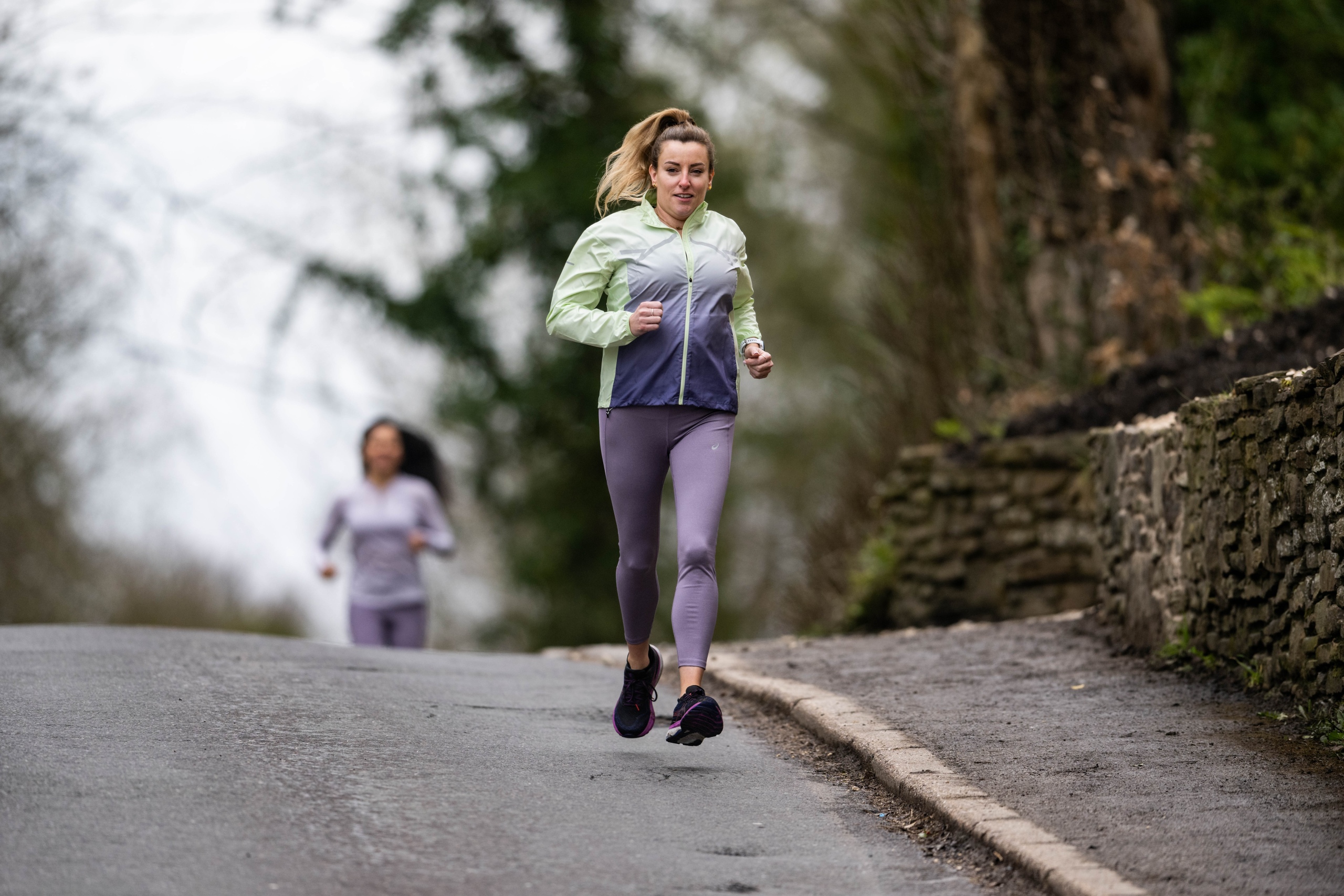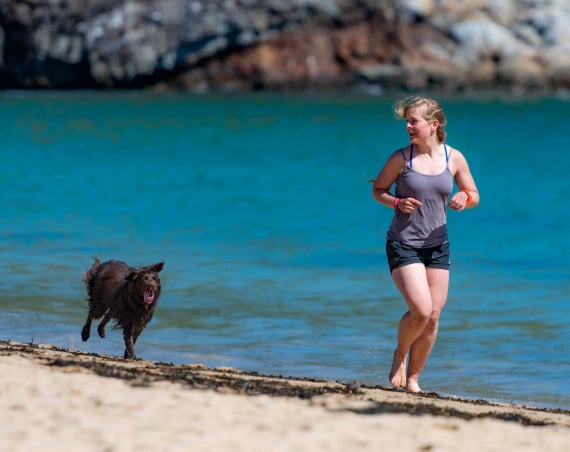Congratulations! You’ve conquered a running distance of 5 kilometres – and now you’re keen to take your journey to the next level. Whether you’re eyeing up a race or have set your sights on a scenic 10-kilometre route, making the leap from 5k to 10k* is a great goal that will push your limits, both mentally and physically.
At David Lloyd Clubs, we’re thrilled to be partnering with ASICS on the relaunch of our DL Run Club – and we’ve asked their in-house running experts for some insider advice for conquering a 10k.

In this blog post, ASICS will delve into why you should consider increasing your distance, explore exercises to boost your strength and endurance, and offer tips on preparing for your 10k journey.
Words by ASICS Frontrunner Rachel Diver

*If you haven’t run at least 5k in one go yet, follow the David Lloyd Clubs 5k in 6 weeks training programme before attempting to run a 10k.
Training tips for a 10k run
How do you know if you’re ready to run 10k?
If you can run 5k comfortably and have been consistent with your training, you’re on the right track. Listen to your body, and if you feel ready for a challenge, it’s time to set your sights on 10k.
Why should you consider increasing your running distance?
• A new challenge: Running a 10k offers a fresh challenge, helping you break through the monotony and plateau that can sometimes come with sticking to shorter distances. It keeps your passion for running alive.
• Improved fitness: Longer distances challenge your cardiovascular system and overall fitness, leading to increased endurance and stamina. This improvement in fitness can have a positive impact on your overall health and well-being.
• Mental resilience: Pushing yourself to run further requires mental toughness. Training for and completing a 10k will strengthen your mental resilience, a skill that can be applied to various aspects of life.
How long approximately should you give yourself to train for a 10k?
The ideal training period varies from person to person, but a typical training plan ranges from 8 to 12 weeks. It’s essential to give your body time to adapt gradually to the increased mileage and intensity to avoid any injuries.
How different does it feel to run 10k as opposed to 5k?
Running 10k is a significant step up from 5k as it’s double the distance, but it is still easily achievable. You’ll notice several differences:
- Pacing: You’ll need to pace yourself more conservatively to avoid burning out too soon.
- Mental stamina: The mental challenge increases as you’re on the road longer. Focus on staying motivated and maintaining a positive mindset.
- Fuelling: Hydration and nutrition become more critical during longer runs. Experiment with fuelling strategies to find what works best for you.
Do you need new running shoes if you’re increasing your distance?
While it’s not an absolute necessity, it’s a good idea to assess your current running shoes. If they’re worn out or no longer provide proper support, investing in a new pair designed for longer distances can help prevent injuries and ensure a more comfortable run.
What can you do to improve strength and endurance for a 10k run?
To excel in a 10k run, it takes more than just running. Consider incorporating the following into your routine:
- Strength training: Include bodyweight exercises like squats, lunges and planks to build leg and core strength. This will help maintain proper form and reduce the risk of injury.
- Cross-training: Consider activities like swimming, cycling, or yoga to give your running muscles a break and work on different muscle groups.
- Interval training: This involves alternating between high-intensity bursts and low-intensity recovery periods. It’s a great way to boost cardiovascular fitness.
Warm up and cool down
Always make sure to warm up and cool down before and after your runs to reduce the risk of injury. You can warm up with just a few minutes of dynamic exercises such as lunges, squat jumps, or gentle skipping. End each run by stretching out the main muscles used, such as the glutes, calves, ankles and hips.
Give yourself adequate rest
One of the most common mistakes people make in training for a 10k is failing to give themselves adequate rest days. Rest days allow your body to recover and get stronger. You should aim to run/cross-train a maximum of three days a week, with one or two strength training sessions– the remaining days should be rest days.
And finally… Enjoy the process
The journey from 5k to 10k is a rewarding one. It offers you a chance to grow physically and mentally while enjoying the thrill of setting and achieving new goals. With proper training, preparation, and the right mindset, you’ll soon find yourself conquering 10ks and maybe even setting your sights even higher.
David Lloyd Clubs and ASICS
David Lloyd Clubs members get 20% off all full-priced ASICS items, from apparel and footwear to accessories. If you’re a member, head to the benefits section of the David Lloyd Clubs app to redeem this amazing offer.






